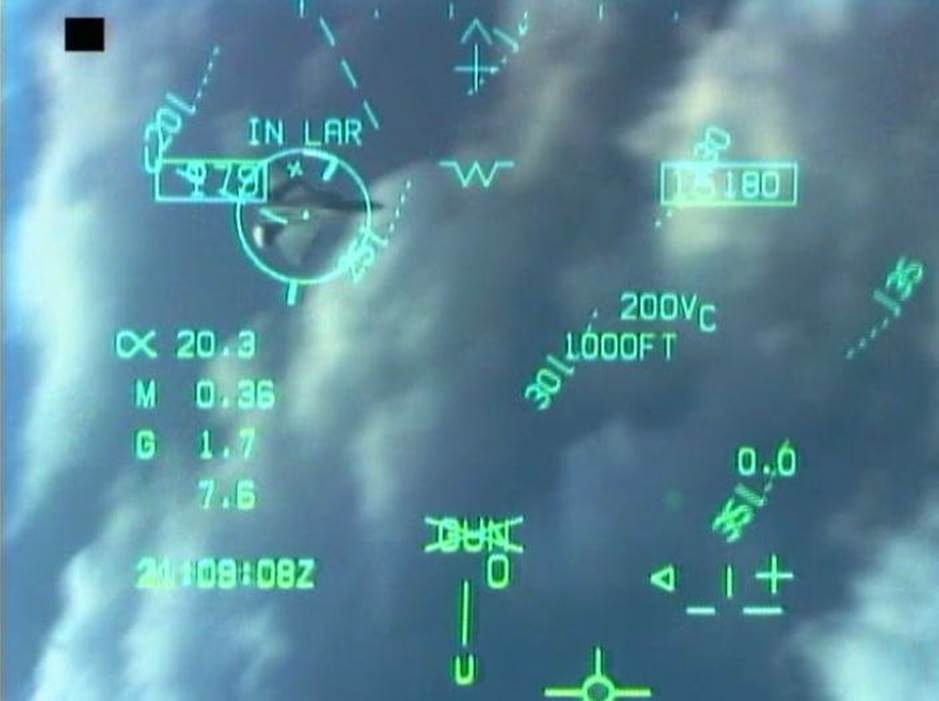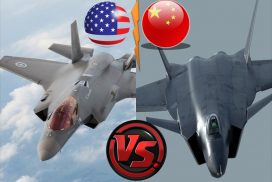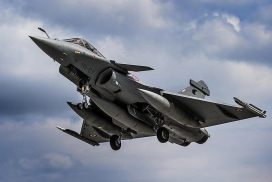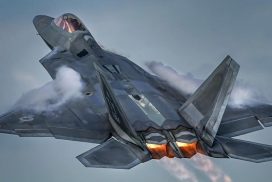Tactics, training and luck are the determining factors in who survives within visual range aerial combat. Despite the modern emphasis on beyond-visual range combat, the vast majority of fighter versus fighter engagements have taken place at close ranges. The following ten are the best fighters for this mission. The order is more or less arbitrary, with different aircraft having the advantage at different altitudes and air speeds. By its nature, any top ten is simplistic and should serve as the basis for discussion rather than as a conclusion.
Joe Coles from the Hush-Kit blog brings you a snapshot analysis of the ten most formidable dog-fighters of today.
10. Joint place: Dassault Mirage 2000 and MD/Boeing F-15 Eagle
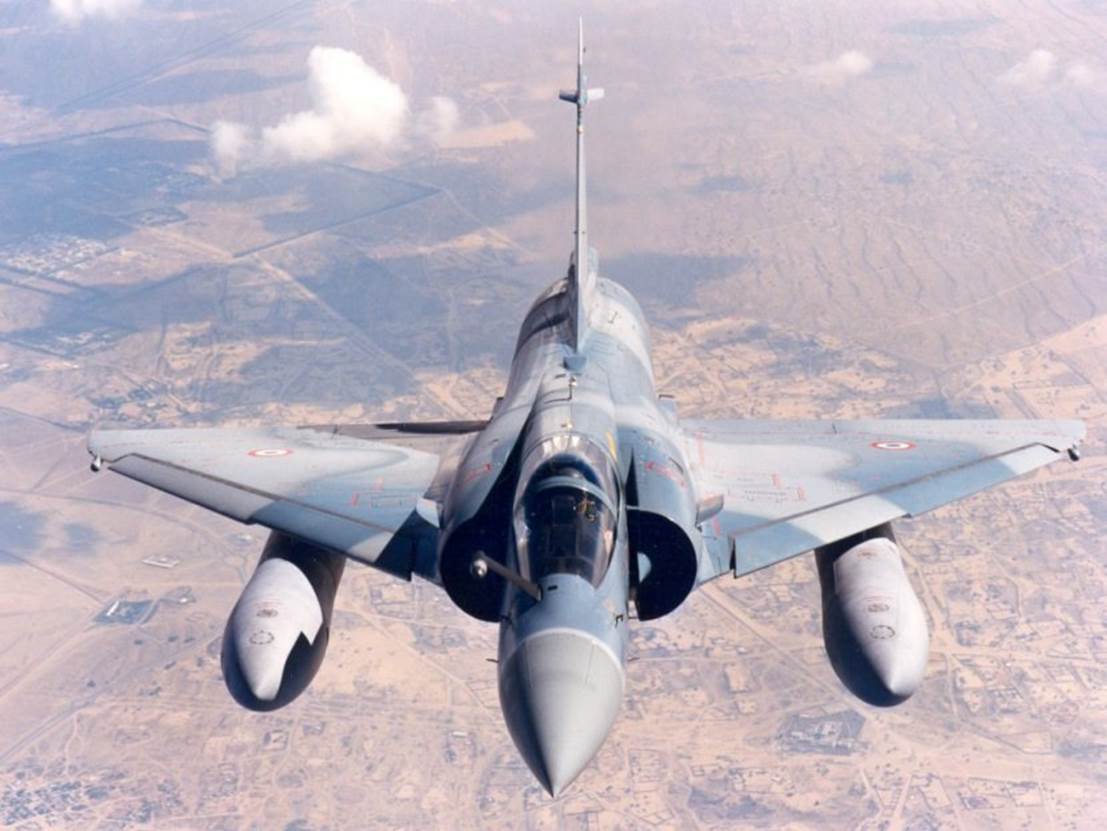
The Mirage 2000 is said to be broadly comparable to the F-16, but with a superior instantaneous turn rate at medium to high altitudes and a lower sustained turn rate across the board. The aircraft was reported to have been soundly trounced by the MiG-29 in DACT exercises by the Indian Air Force. With its large delta wing, it is happiest fighting ‘high and fast’.
HMD/S: Yes, Topsight on late-model aircraft
Advanced SRAAMs: Yes, MICA
Visual stealth: Good
Thrust-to-weight ratio: Poor
High alpha performance: Poor
Sustained turn rates: Poor
Instantaneous turn rates: Excellent
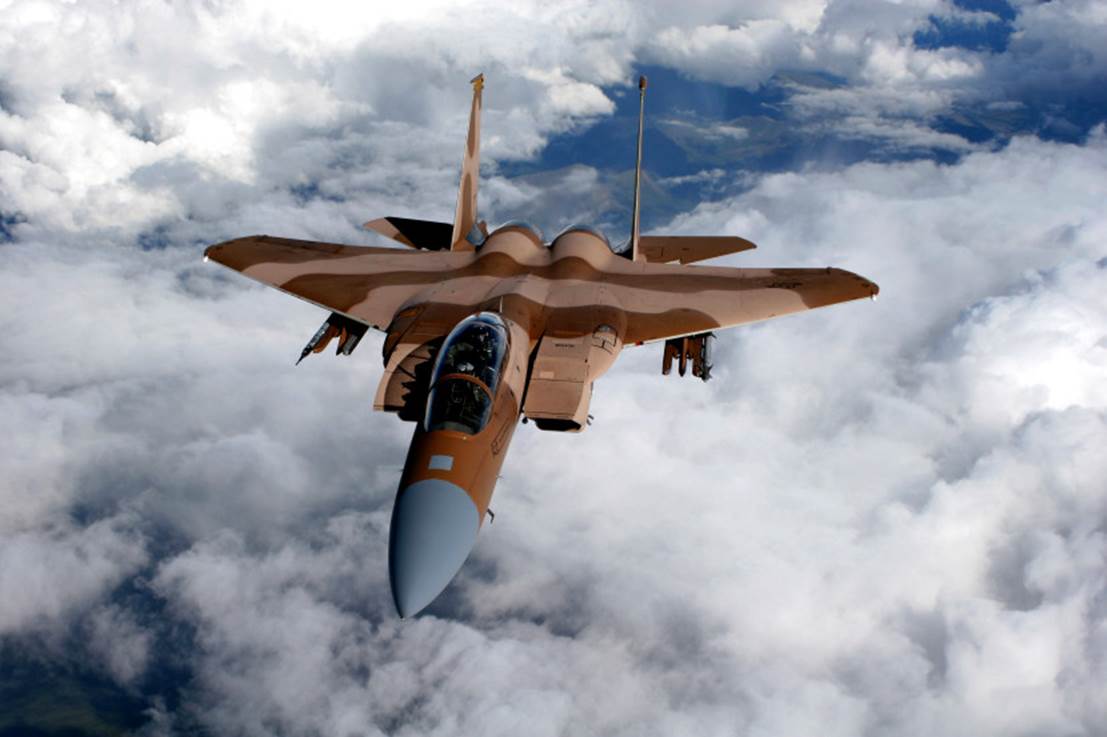
Once considered top dog, the F-15 is now making room for younger aircraft. In exercises, the type still does well, but this says more about the pilot quality than any inherent advantage of this platform in the WVR arena. Well-armed, well-equipped and powerful, it is still an aircraft to be respected. In later exercises against India it is reported to have been able to use superior tactics to defeat Su-30s, despite the Russian aircraft enjoying greater maneuverability at low speeds.
HMD/S: Yes
Advanced SRAAMs: Yes, AIM-9X, Python 4/5
Visual stealth: Poor
Thrust-to-weight ratio: Good
High alpha performance: Poor
Sustained turn rates: Good
Instantaneous turn rates: Good
9. Chengdu J-10
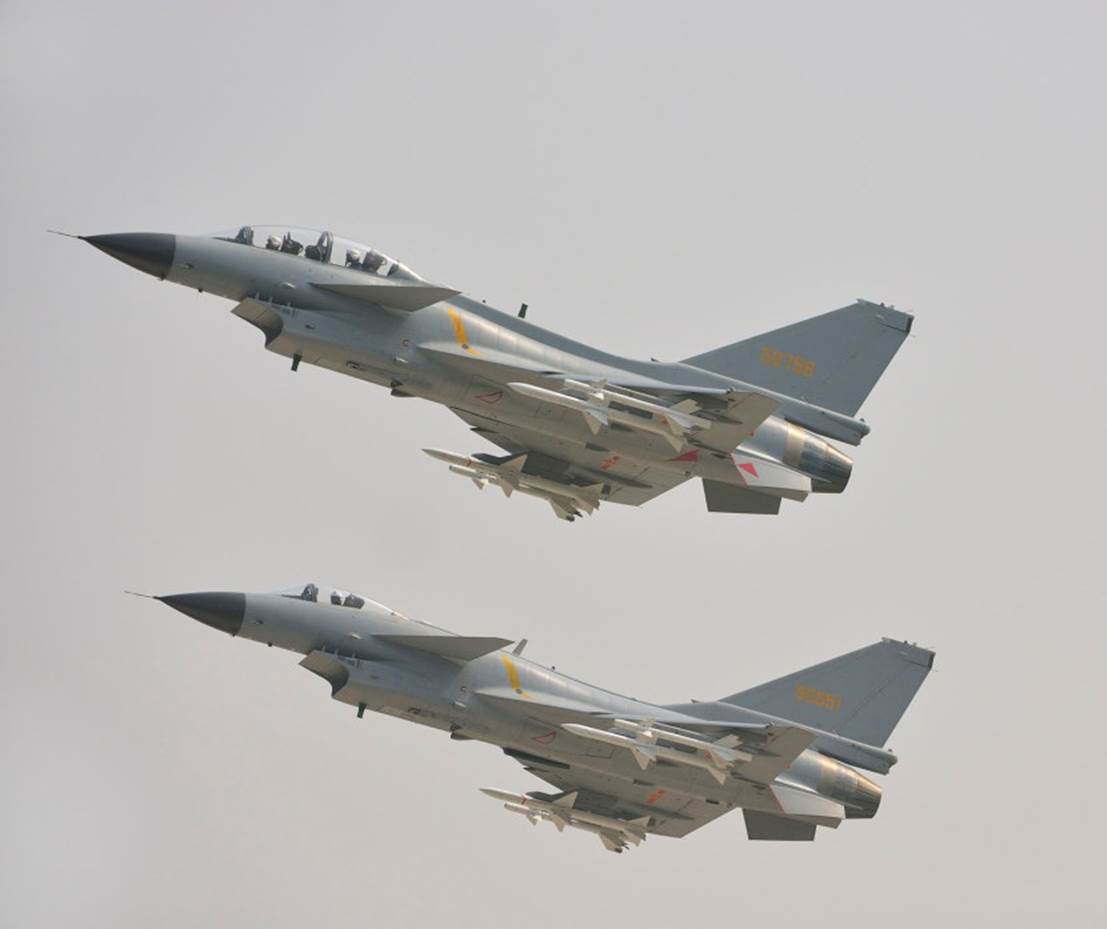
Rumors from China describe the J-10 performing well in DACT exercises against the far bigger Su-27/J-11. With a maximum G-rating of +9 / -3 and a maximum sustained turn load of 8.9g, the type has demonstrated impressive performance at several public airshows. It scores highly on turn radius, low visu-al signature, low-speed capabilities and also has excellent pilot vision.
HMD/S: Yes
Advanced SRAAMs: No, at present only PL-8
Visual stealth: Excellent
Thrust-to-weight ratio: Good
High alpha performance: Good
Sustained turn rates: Good
Instantaneous turn rates: Good
8. General Dynamics/Lockheed Martin F-16
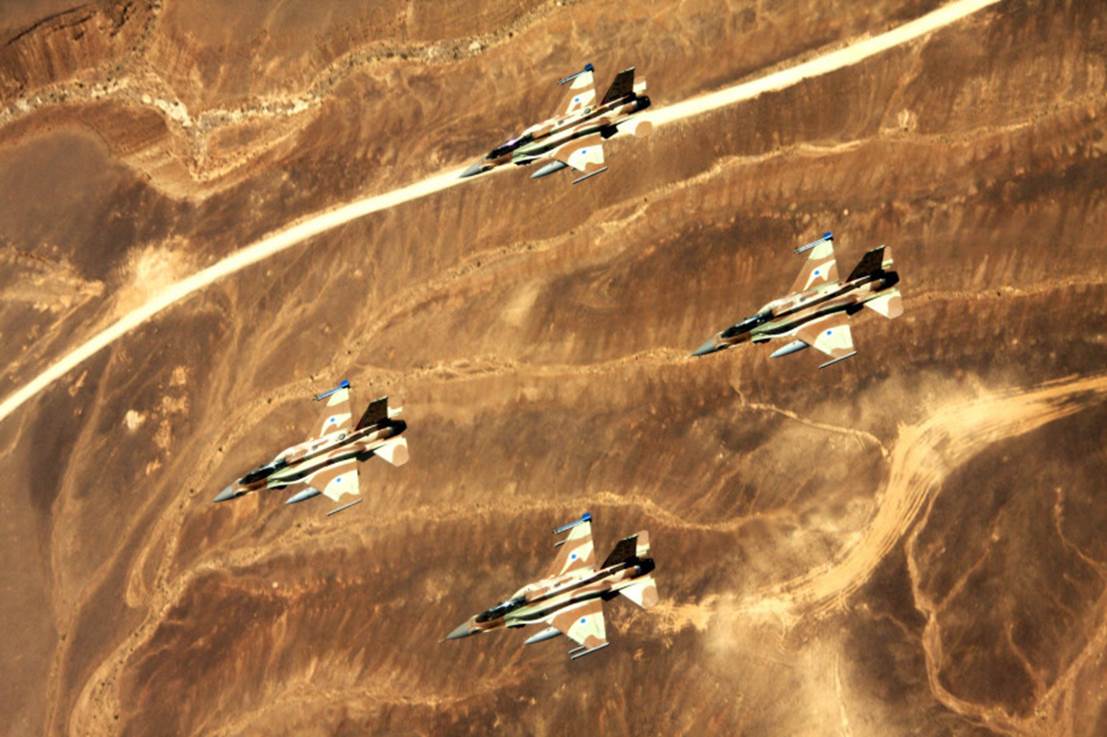
The Viper remains potent at the mission it was designed for: the close-in dog-fight. The Viper has grown fatter with age, so the early Block aircraft are the spriteliest, this combined with JHMCS and modern missiles, like the AIM-9X, Python 5 and IRIS-T keep it a foe to respect. It is small and hard for its proponents to keep visual tabs on, it has an impressive turn rate and has better retention of energy than larger-winged peers like the Mirage 2000. Below 10K feet the F-16 is similar in performance to the Typhoon. Most F-16 models have a better thrust to weight ratio than the Super Hornet (when similarly equipped). The Python 5 is regarded as one of the best air-to-air missiles, it has a very large weapon engagement zone (WEZ) and a high resistance to countermeasures.
HMD/S: Yes, JHMCS
Advanced SRAAMs: AIM-9X, Python 4/5 and IRIS-T
Visual stealth: Good
Thrust-to-weight ratio: Good
High alpha performance: Good
Sustained turn rates: Good
Instantaneous turn rates: Excellent
(If all this is too modern for you, have a look at the Top Ten World II fighters)
7. Sukhoi Su-30
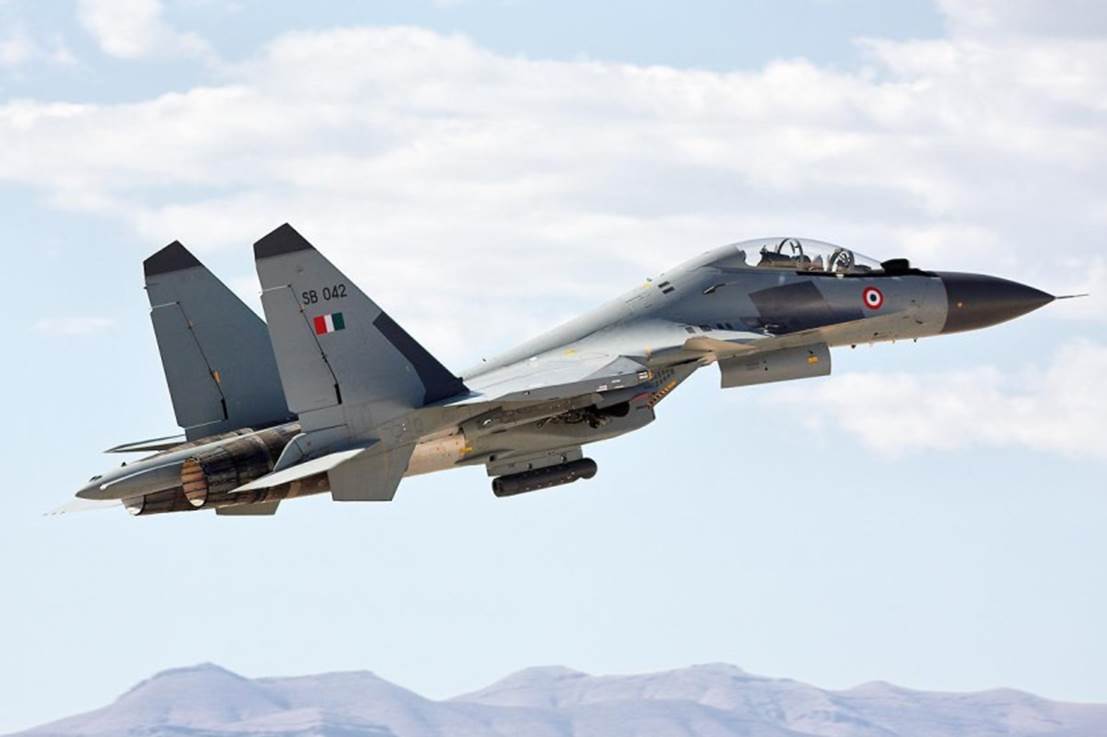
The Su-30 enjoys almost unbeatable agility in the low-speed range. Superb aero-dynamics combined with 3D vectoring bless the Su-30 with an almost unbelievable maneuverability. It has a proven helmet-mounted sight, good short missiles and a powerful, accurate cannon. Its main disadvantage in the dogfight is its enormous size making it easy for enemies to visually track it.
HMD/S: Yes
Advanced SRAAMs: No, but R-73 is still highly regarded. R-74 in the pipeline.
Visual stealth: Poor
Thrust-to-weight ratio: Good-Excellent
High alpha performance: Excellent
Sustained turn rates: Good
Instantaneous turn rates: Excellent
6. Mikoyan MiG-29
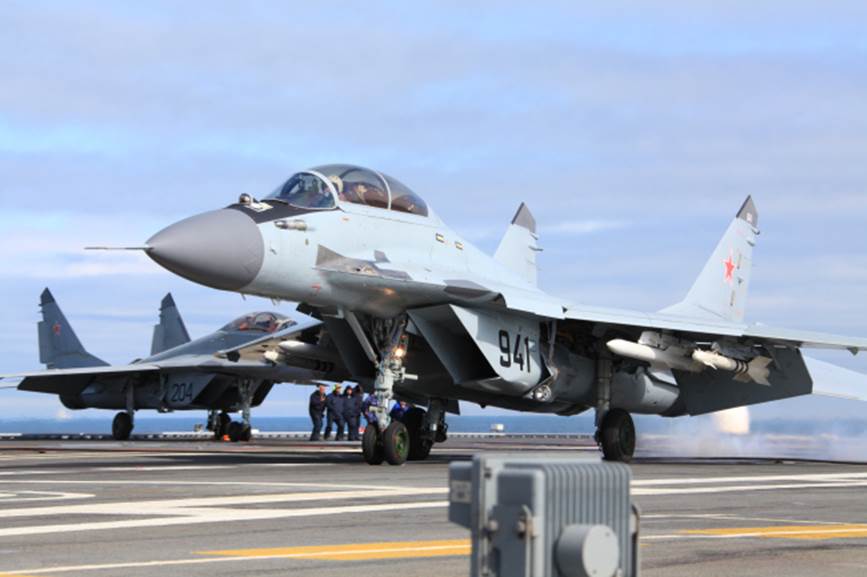
Despite its age the MiG-29 remains a fiercely capable dog-fighter, sharing many of the weapon systems of the ‘Flanker’. The Indian Indian MiG-29K/KUB with the TopOwl helmet-mounted and R-73E is the best-equipped variant in the WVR scenario, but is normally limited to 7G, whereas land-based ’29s are 9G capable. When the MiG-35 enters service it will be the most agile fighter in the world in the low speed regime, as anyone who has witnessed the physics defying antics of the MiG-29OVT will testify. Though thrust-vectoring, post-stall manoeuvrings must be used very carefully to be effective, the MiG-35’s unsurpassed power -to-weight ratio should ensure it recover lost energy states quickly. The tough structure offers a degree of battlefield protection according to MiG who have assessed the type’s performance in actual wars. According to at least one MiG-29 pilot, the type enjoys a small, but significant advantage over the F-16 in the merge. One USAF F-16C pilot (Mike McCoy of the 510th) who flew BFM against MiG-29s noted “In a low-speed fight, fighting the ‘Fulcrum’ is similar to fighting an F-18 Hornet…But the ‘Fulcrum’ has a thrust advantage over the Hornet. An F-18 can really crank its nose around if you get into a slow-speed fight, but it has to lose altitude to regain the energy, which allows us to get on top of them. The MiG has about the same nose authority at slow speeds, but it can regain energy much fast-er. Plus the MiG pilots have that forty-five-degree cone in front of them into which they can fire an Archer and eat you up.”
HMD/S: Yes
Advanced SRAAMs: No, but R-73 is still highly regarded. R-74 in the pipeline.
Visual stealth: Medium (poor in early versions due to smoky engines)
Thrust-to-weight ratio: Excellent
High alpha performance: Excellent
Sustained turn rates: Good
Instantaneous turn rates: Good-excellent
5. Saab JAS 39 Gripen
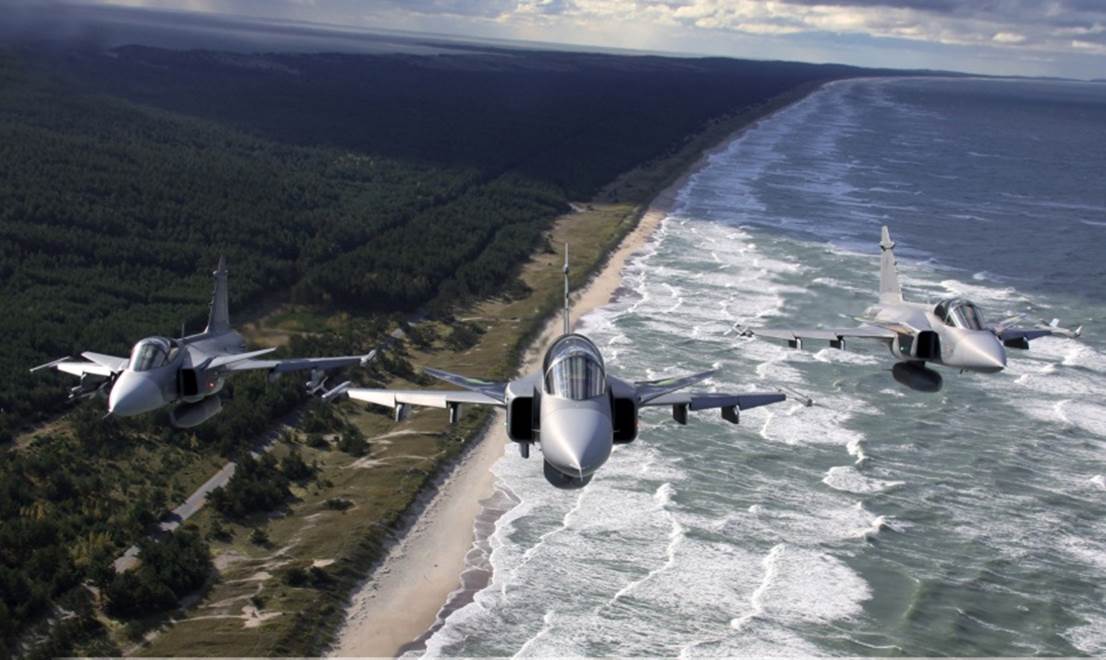
‘Lose sight, lose the fight‘ is an old dogfighting adage and it is very easy to lose sight of the tiny Gripen. Though not the most powerful fighter, it is agile, well-armed and gives its pilot good situational awareness. Some Gripen operators employ an advanced helmet-mounted sight in conjunction with IRIS-T missiles, a sobering prospect for potential adversaries. The IRIS-T is a highly regraded weapon, with excellent agility and target discrimination. The helmet-sight, is an adaptation of the Typhoon helmet, the most advanced helmet in operational service. The Gripen preserves energy very well, is hard to spot and has the smallest IR signature of the fighters on this list. Check out Top Ten Swedish aeroplanes here.
Helmet Mounted Display/Sight: Yes: Cobra
Advanced SRAAMs: IRIS-T
Visual stealth: Excellent
Thrust-to-weight ratio: Good
High Alpha performance: Good
Sustained turn rates: Excellent
Instantaeous turn rates: Good
4. Dassault Rafale
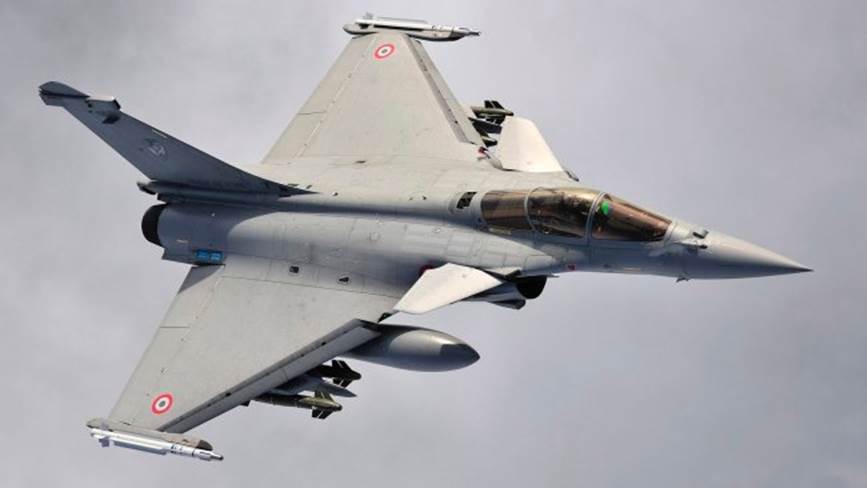
The Rafale can maintain higher Alpha manourves than the Typhoon. It is very agile, with an excellent man machine interface and the most advanced aircraft cannon. Like most carrier fighters it is docile in the low speed ranges that most within-visual-range fights take place at. It lacks a helmet-mounted sight and its high alpha performance is inferior to that of the Hornet family. At sea level the Rafale is reported to a have a superior instantaneous turn rate to Typhoon. The Rafale has reportedly done well in DACT exercises against the F-22. The Rafale is an extremely tough opponent in the WVR regime.
HMD/S: No
Advanced SRAAMs: Yes, MICA
Visual stealth: Medium
Thrust-to-weight ratio: Good
High alpha performance: Good
Sustained turn rates: Good
Instantaneous turn rates: Excellent (especially at low level)
3. Lockheed Martin F-22A Raptor
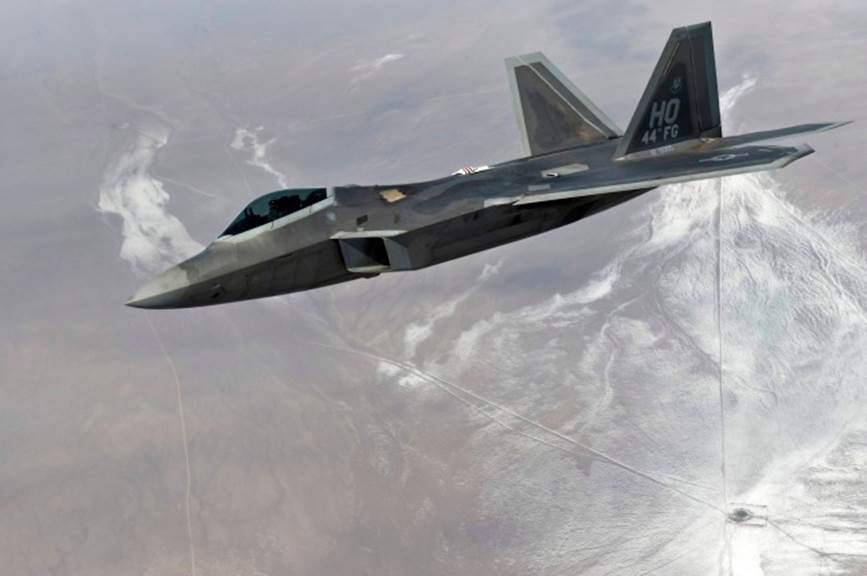
The Raptor’s excellent power-to-weight ratio, low wing-loading and 2D thrust-vectoring make it a fierce opponent in the visual range dogfight. It is let down by its elderly short range air-to-air missiles, lack of helmet-mounted sight and its large size. The internal carriage of its AIM-9M limits the way they can be used, and it only carries two. According to Typhoon pilots who ‘fought’ against it, the Raptor loses energy very quickly when employing thrust vectoring. The Raptor pilot likes to keep the fight high and fast.
HMD/S: No
Advanced SRAAMs: No
Visual stealth: Poor
Thrust-to-weight ratio: Excellent
High Alpha performance: Excellent
Sustained turn rates: Excellent
Instantaneous turn rates: Excellent
2. McDonnell Douglas/Boeing F/A-18 Hornet Super Hornet
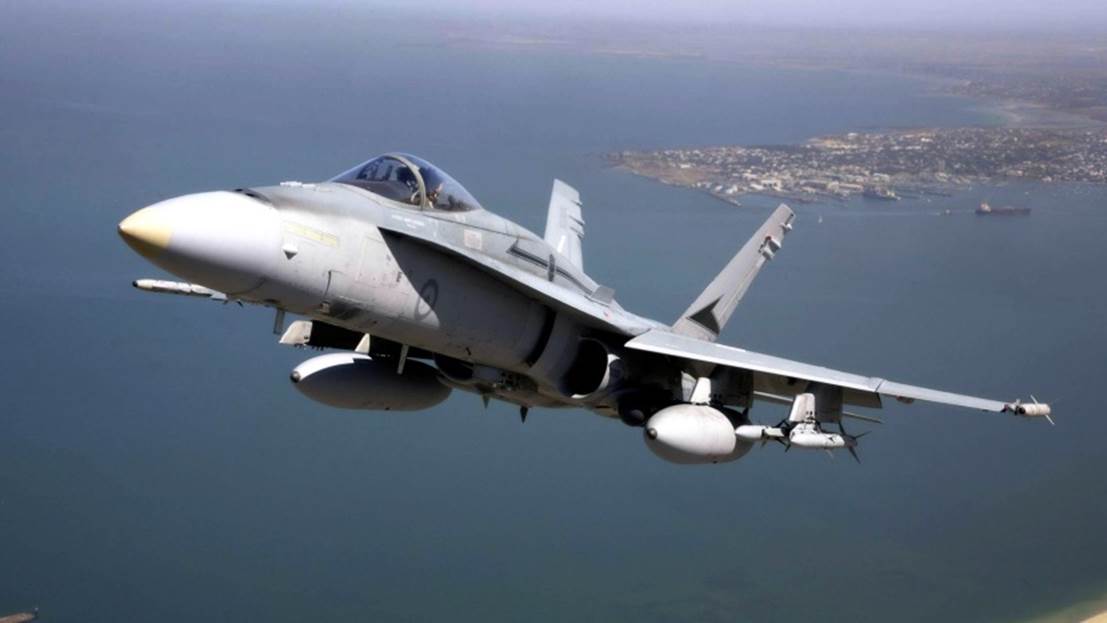
The Bug family have excellent nose authority, JHMCS and good missiles in the form of AIM-9X (or ASRAAM for RAAF legacy birds). At low level they are the equal of any operational fighter, but at higher altitudes they at disadvantage against more modern aircraft like the Typhoon, Rafale and F-22. The legacy Hornet is 9G rated as opposed to the larger Super Hornet which is stressed up to 7G for normal operations (it is really the legacy F/A-18 that deserves this high ranking but the Super Hornet is also highly regarded in the ‘merge’). It has been noted by F-16 pilots that Super Hornets lose energy quicker than Vipers at high-er altitudes. In a slow fight, no Western fighters can match either the Bug or the Rhino. One pilot who has flown the Super Hornet recommended that I mention the ‘Turbo Nose down’, a manoeuvre which utilises the aircraft’s excess power to rapidly push the aircraft out of high alpha flight. Australian Hornets have demonstrated a 180° missile shot with the AIM-132, firing the missile at a target in the firing aircraft’s 6’o’ clock in the lock-on after launch mode. The so-called ‘Parthian Shot’ is a defensive boon, but demands a wingman with nerves of steel and faith in the technology!
HMD/S: Yes
Advanced SRAAMs: ASRAAM, AIM-9X
Visual stealth: Medium
Thrust-to-weight ratio: Good
High alpha performance: Excellent
Sustained turn rates: Good
Instantaneous turn rates: Excellent
1. Eurofighter Typhoon
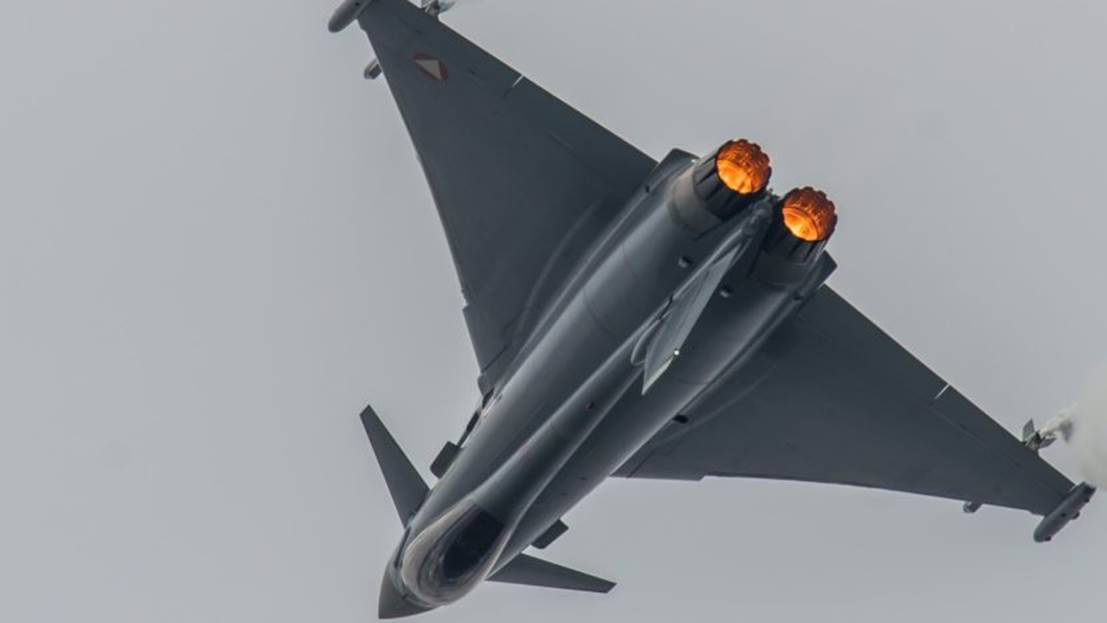
Wild turn rates, a true 9G performance and enormous excess power make the Typhoon a hell of a dogfighter; the highly regarded G-suits worn by Typhoon pi-lots increase tolerance to the high forces generated by the energetic Typhoon. It also features the most advanced helmet mounted sight in service, a powerful can-non and the excellent IRIS-T and ASRAAM missiles. The combination of ad-vanced missile and helmet imbue the Typhoon with a terrifying off-boresight missile shot capability. Testing of the Aerodynamic Modification Kit, which in-cludes modified strakes, extended flaperons and mini-leading edge root exten-sions may go some way to rectify Typhoon’s main limitation – a pedestrian high alpha performance. But the Typhoon is not an ‘angles fighter’ like the F/A-18 which relies on risky (as they drain energy quickly) but startling attacks in the merge; the Typhoon is an ‘energy fighter’ using its phenomenal ability to preserve energy in a dogfight to wear its opponents out. In short, if an opponent doesn’t get a Typhoon on his first attack he is in a very dangerous position as the large amount of excess thrust makes the aircraft a very energetic adversary.
F-22 pilots who ‘fought’ the Typhoon in DACT were impressed by its energy levels (especially in the first turn) and several Luftwaffe aircraft proudly dis-played Raptor ‘kill’ silhouettes beneath their cockpits. Like the Raptor, the Ty-phoon has such a formidable reputation that any ‘victories’ against it in training exercises make excellent boasts. At medium to high altitudes the type is generally superior to the teen fighters in the WVR regime. According to one Typhoon pilot, its dog-fighting abilities are a close match to the Raptor’s, but Typhoon benefits from being smaller and better armed.
HMD/S: Yes
Advanced SRAAMs: ASRAAM, IRIS-T
Visual stealth: Medium
Thrust-to-weight ratio: Excellent
High alpha performance: Poor
Sustained turn rates: Excellent
Instantaneous turn rates: Excellent
Also check check out our article on Eurofighter Typhoon vs Dassault Rafale
So there we have it, or do we?
I asked a fighter pilot (with experience of flying most of the ‘4.5 generation’ fighter aircraft) his opinion on my top ten selection; he was keen to dismiss such a crude approach:
“It is complicated to discuss this issue in just a few words, but in order to produce a new look analysis on WVR, you should think about gyroscopic vs needle ‘driving styles’ (and the capabilities needed to play this or that, of course). So, you will pass through power-to-weight ratio, rudder surfaces, flying characteristics across different flight levels, etc. Until you get to the crucial area of energy management (that sifts the ace from the targets). It is all a question of control of the part of the egg you want to keep the fight, and well-trained pilots with good tactics will always try to keep the fight in a corner where they have some advantage. We’re not talking about an UFC card! It is team work.
The tactical egg is an imaginary bubble that represents all possible motions of an aircraft in a dogfight, showing the effects of gravity on the aircraft’s manoeuvring. Of course, new weapons (with the ability to lock-on after launch), helmet mounted sight, etc. are making the job much more complex.
Conclusion: This question requests hours of conversation and a dozen beers! “

